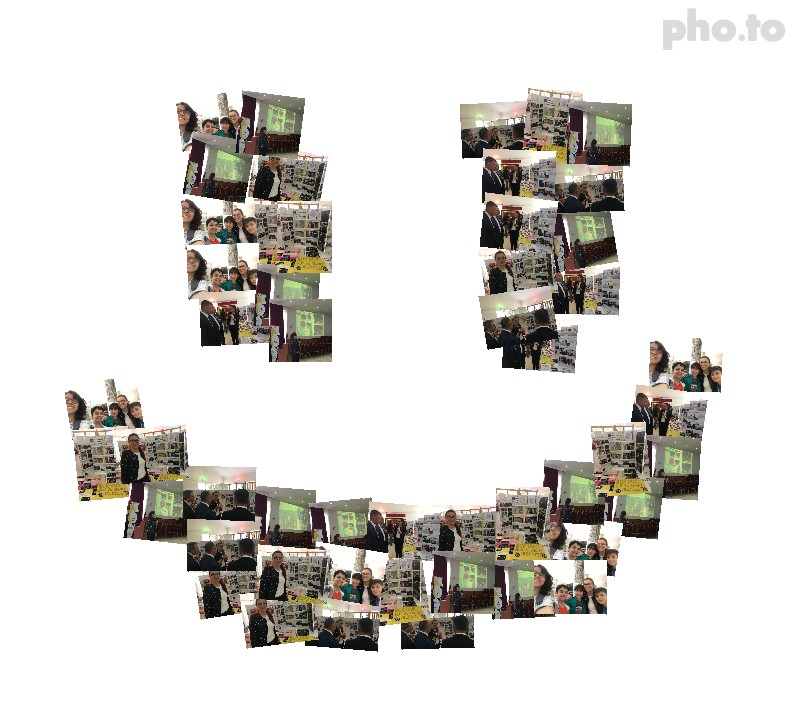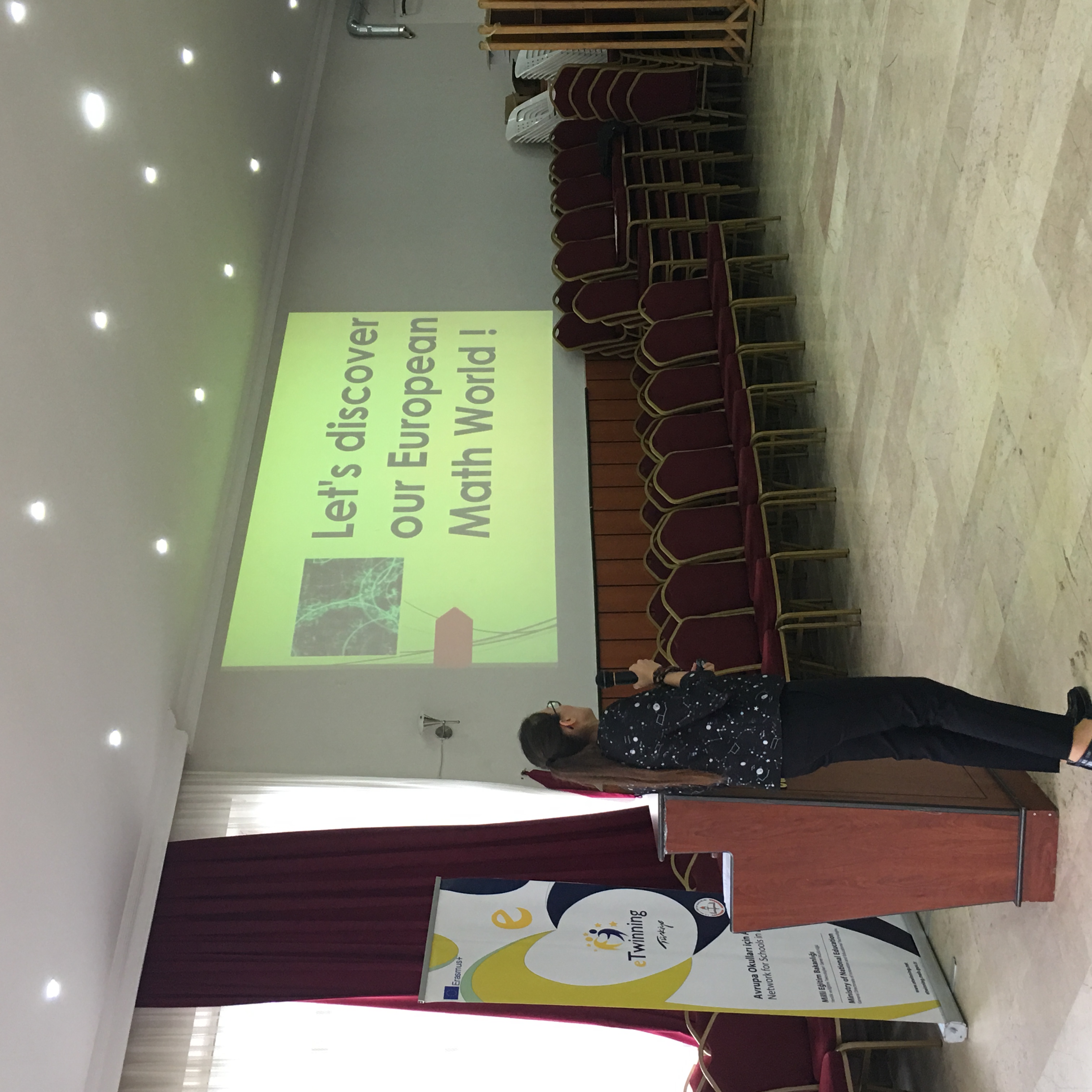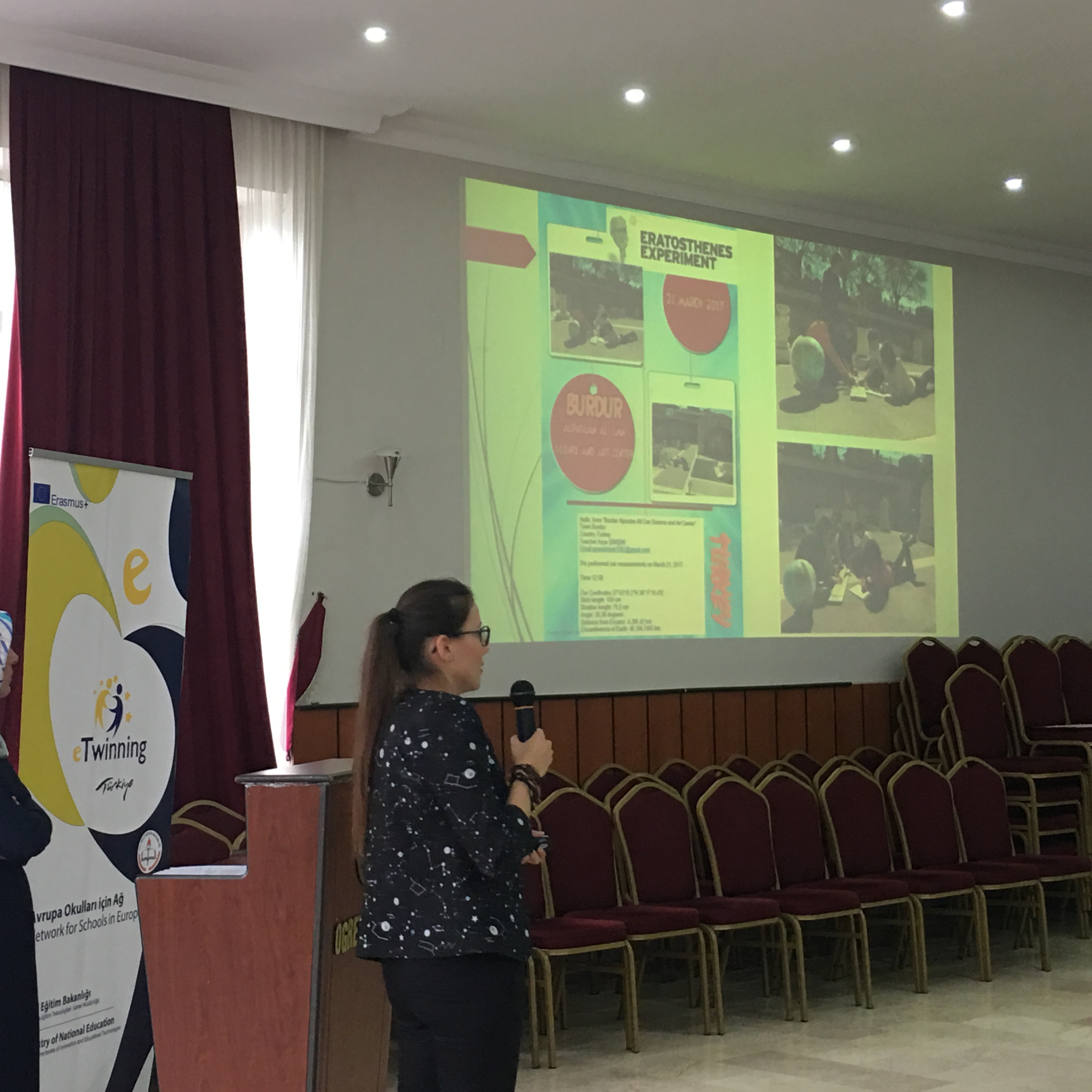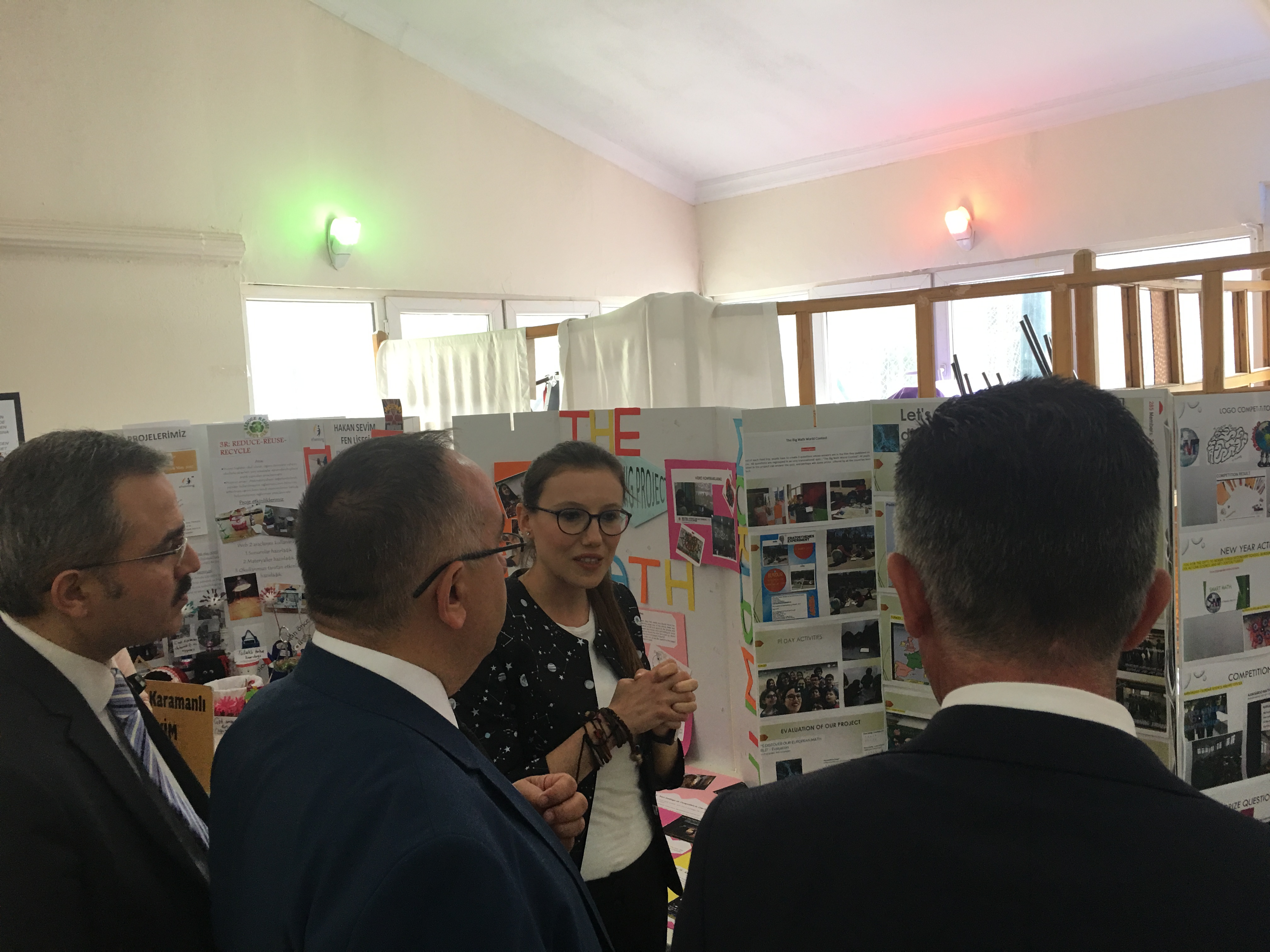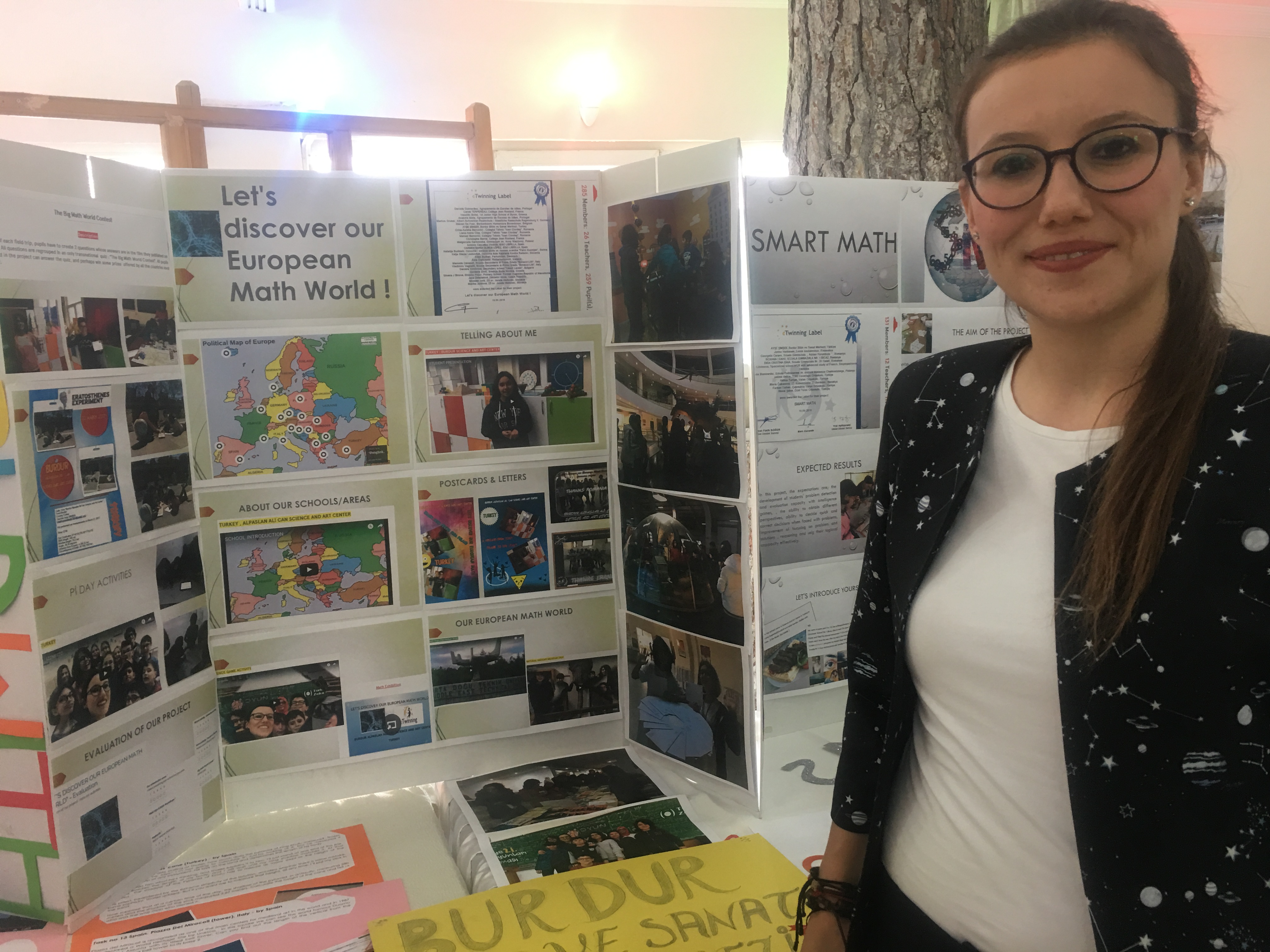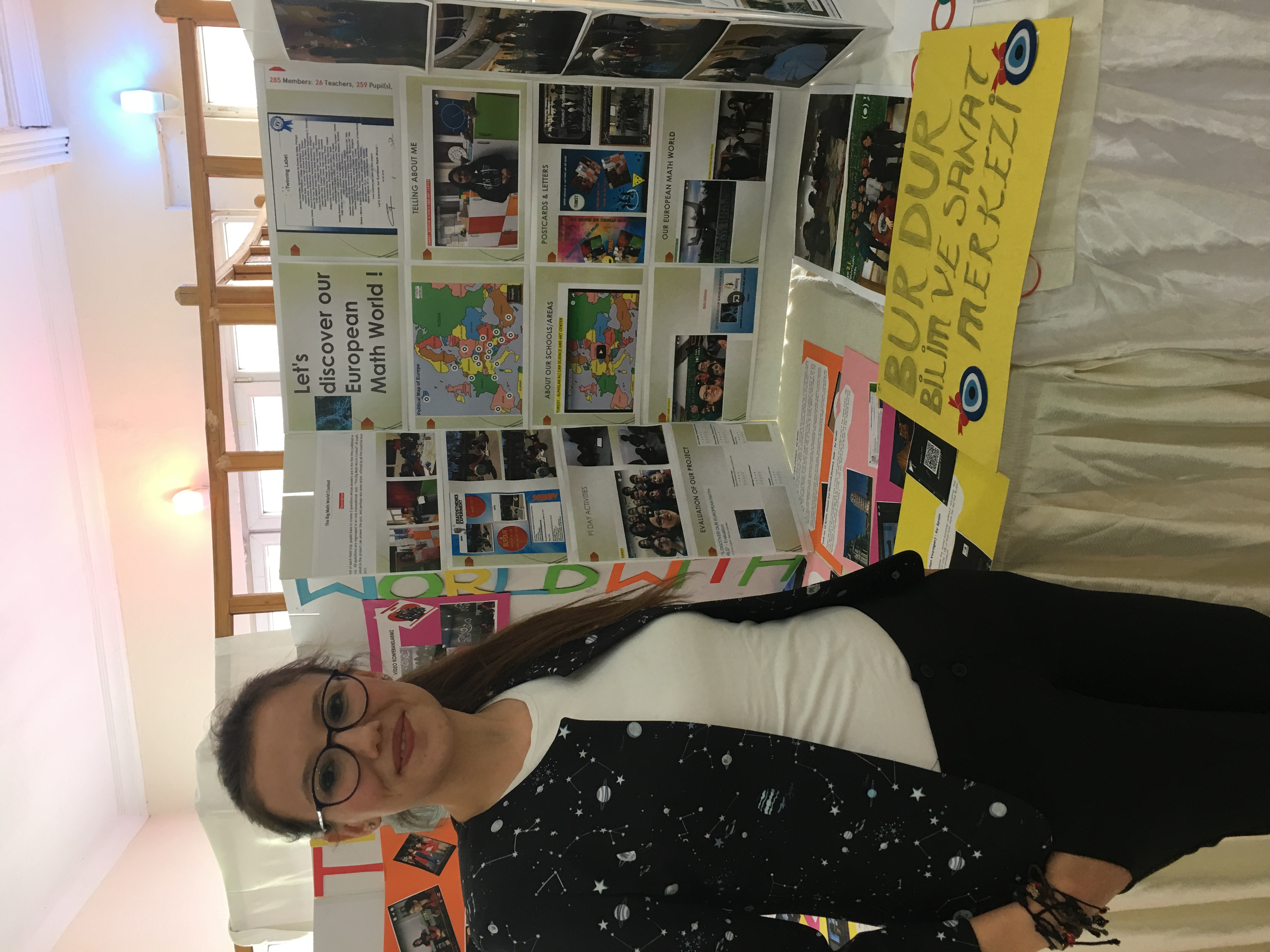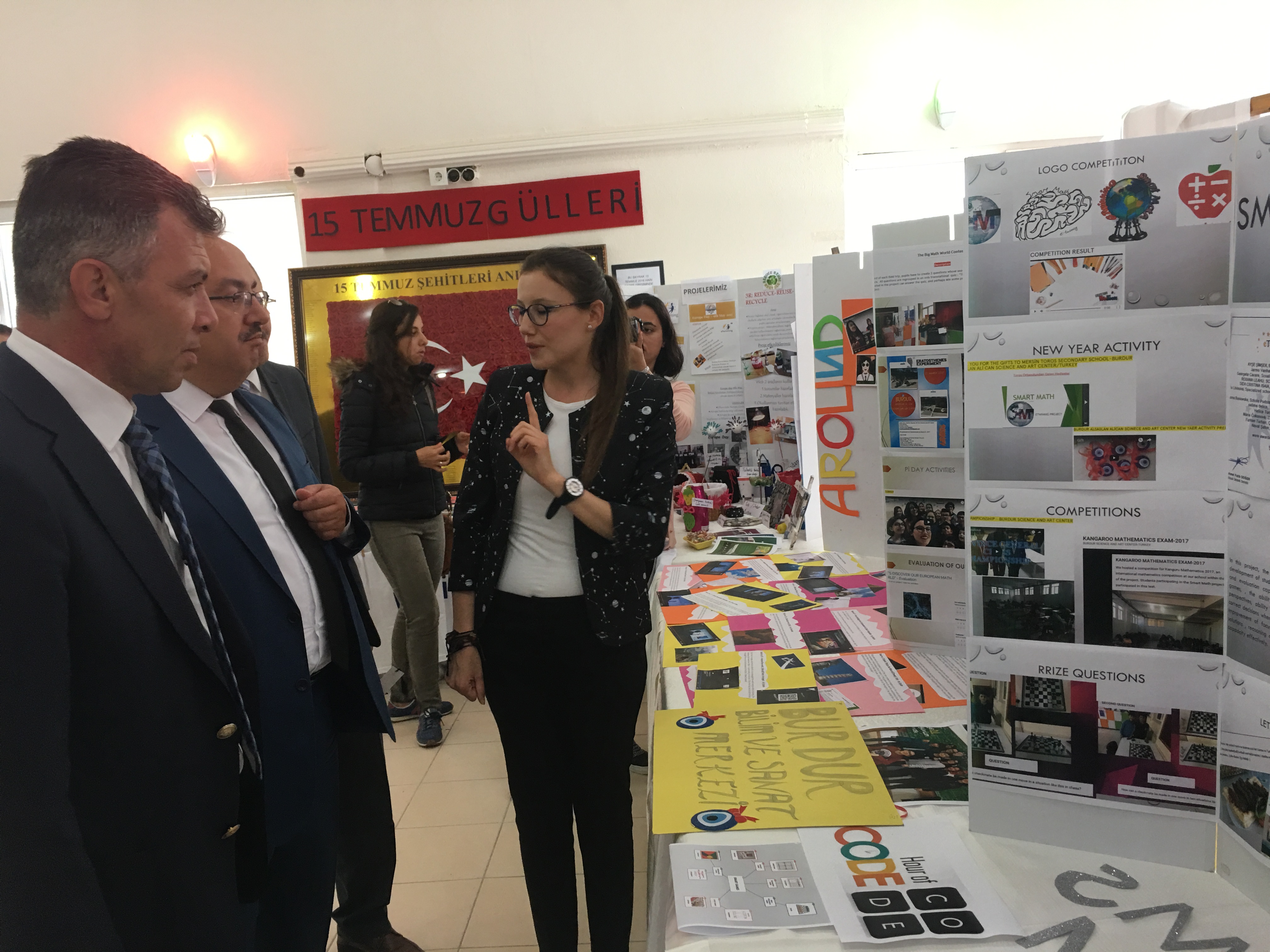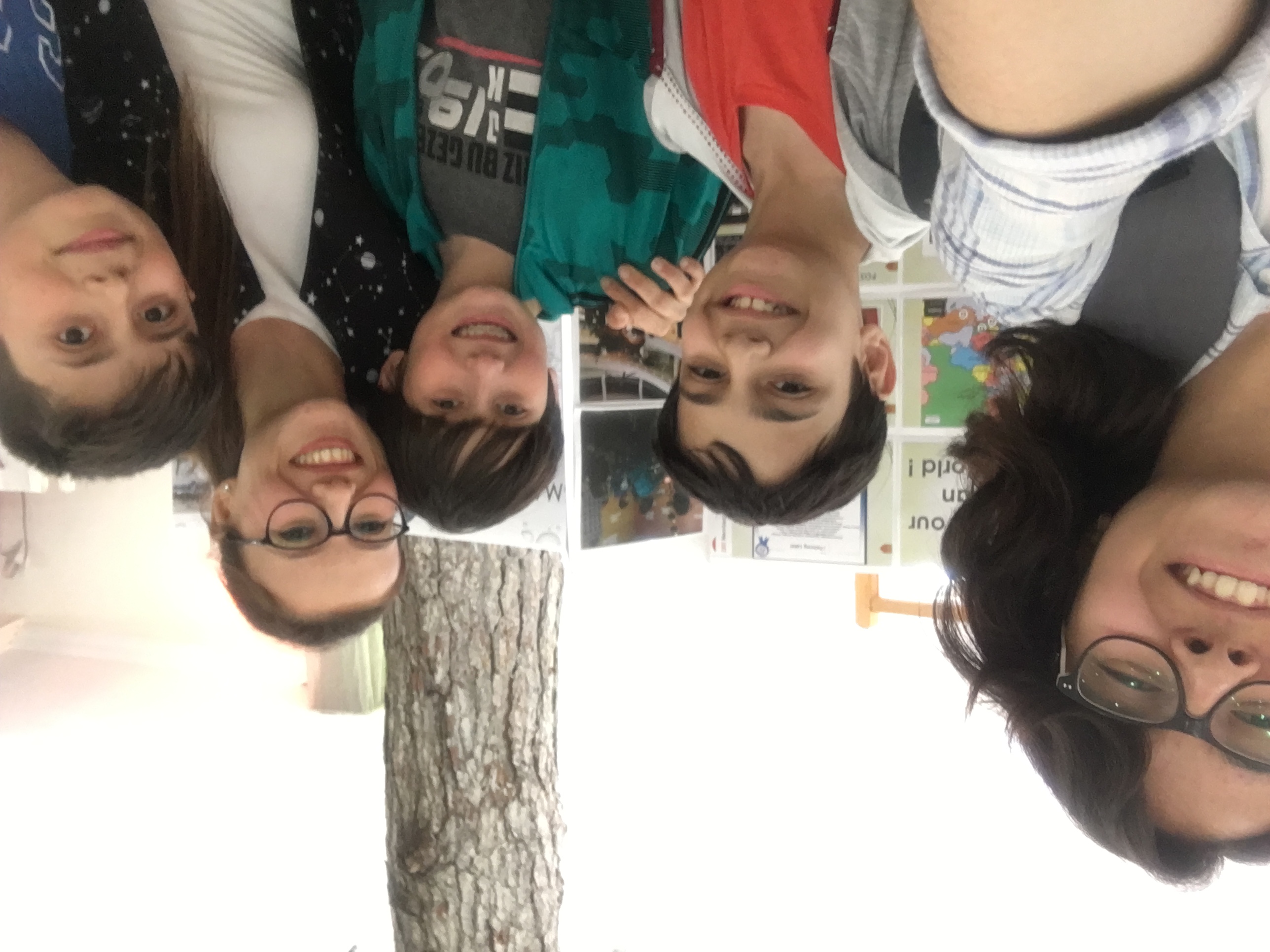TURKEY : Our field trips (December 2016)

We participated in a chess event held on December 24th in Middle East technical University. Some students were able to play chess with Turkish National Chess Player Nilüfer Çınar Çorlulu. After this event, we organized various chess activities in our shool. We did chess pieces and movements, one step and two step mat situations on math activities.

1) Who is the first female international chess champion in Turkey?
a)Cahit Arf
b)Nilüfer ÇINAR ÇORLULU
c)Gülümser YILMAZ
d)Betül Cemre YILDIZ
2) What is the relationship between chess and mathematics?
NATURAL HISTORY MUSEUM TRIP:
We visited the MTA Natural History Museum with the students and the parents on December 23th 2016. In the museum:
After a journey into the deep space and the planets of the Solar System in the Ground Floor, while walking up to the First Floor you will see how the earth and life has changed during 4.5 billion years from the formation of the earth,
The fossils of the Invertebrate Section display the transition from unicellular to multicellular life. 185 milion years old giant Ammonite Lytoceras from Köserelik, Ankara is one of these important invertebrate fossils and one of the masterpiece of the museum.
In the Vertebrate Section, fossils of fishes, amphibians, reptiles and birds are on display with various mammalian fossils. 280 million years old fossil of Mesosaurus brasiliensis, a fresh water reptile which was found in the South America, gives us important information about the positions of continents and oceans in the past.
The fossils of basic mammalian groups are exhibited in systematic order such as Carnivores, Proboscideans, Perrisodactylas, Artiodactylas and Primates.
On the First Floor, our visitors can also observe the specimens of the extinct gigantic hornless rhinoceros Baluchitherium, the largest land mammal known, which lived 25 million years ago. All these specimen were found from Turkey during the joint project between the MTA Natural History Museum and the Muséum National d’Histoire Naturelle in Paris.
At the center of the First Floor, you can meet the moulages of the 150-155 million years old carnivorous dinosaur Allosaurus fragilis, 154 million years old herbivorous dinosaur Brachiosaurus and head moulage of the 67-65.5 million years old gigantic carnivorous dinosaur Tyrannosaurus rex.
Near the dinosaurs you can see the Elephant and Whale Section. In this section, 17-10 million years old Gomphotherium angustidens, 3500 years old Maraş Elephant (Elephas maximus asurus) from Kahramanmaraş, Turkey and the skeleton of a fin whale (Balaeoneptera physalus) from Yumurtalık, Adana which was found in 2002 can be observed.
Click here to get detailed information about museum:
http://www.mta.gov.tr/eng/muze/paleontology

1)Which of the following is not the object of the trip to the Natural History Museum?
a) Observing the evolutionary processes of living things during geological periods.
b) To look for mathematical traces in nature history and to establish relationships.
c)To learn about living and non-living natural beings in Turkey.
d) Get information about mathematical scientists.
2)Make a virtual tour by visiting the Natural History Museum site. You share 5 faktors that draw your attention to the virtual tour result you made.
INTELLIGENCE GAME ACTIVITY

1)6 different numbers are selected among 100 numbers from 1 to 100. Find these numbers which are 220 in total and include number ‘7’ in each.
2)Place the numbers from 12 to 7 in five circles so that the sum of the three numbers on the corners of the five triangles shown in bold is the same. Write the numbers which you have placed in the three circles at the bottom from left to right as an answer.

xhibition
•We went to mathematics exhibition on 27th April 2017 in our city. (Burdur)
•
•We performed activities on «Soma Cube» and «Towers of Hanoi» in this exhibition.
•We enjoyed and learned both in this activity.
SOMA KUBE ACTIVITY
•The Soma cube is a solid dissection puzzle invented by Piet Hein in 1933 during a lecture on quantum mechanics conducted by Werner Heisenberg. Seven pieces made out of unit cubes must be assembled into a 3x3x3 cube. The pieces can also be used to make a variety of other 3D shapes.
•
•The pieces of the Soma cube consist of all possible combinations of three or four unit cubes, joined at their faces, such that at least one inside corner is formed. There is one combination of three cubes that satisfies this condition, and six combinations of four cubes that satisfy this condition, of which two are mirror images of each other. Thus, 3 + (6 * 4) is 27 which is exactly the number in a 3 x 3 x 3 larger cube. A cube comprising 3x3x3 smaller cubes is disected into 7 discrete sub-shapes as the illustration below.
•
•The Soma cube is sometimes regarded as the 3D equivalent of polyominoes. There are interesting parity properties relating to solutions of the Soma puzzle.
•Soma has been discussed in detail by Martin Gardner and John Horton Conway, and the book Winning Ways for your Mathematical Plays contains a detailed analysis of the Soma cube problem. There are 240 distinct solutions of the Soma cube puzzle, excluding rotations and reflections: these are easily generated by a simple recursive backtracking search computer program similar to that used for the eight queens puzzle.
•In each of the 240 solutions to the cube puzzle, there is only one place that the "T" piece can be placed. Each solved cube can be rotated such that the "T" piece is on the bottom with its long edge along the front and the "tongue" of the "T" in the bottom center cube (this is the normalized position of the large cube). This can be proven as follows: If you consider all the possible ways that the "T" piece can be placed in the large cube (without regard to any of the other pieces), it will be seen that it will always fill either two corners of the large cube or zero corners. There is no way to orient the "T" piece such that it fills only one corner of the large cube. The "L" piece can be oriented such that it fills two corners, or one corner, or zero corners. Each of the other five pieces have no orientation that fills two corners; they can fill either one corner or zero corners. Therefore, if you exclude the "T" piece, the maximum number of corners that can be filled by the remaining six pieces is seven (one corner each for five pieces, plus two corners for the "L" piece). A cube has eight corners. But the "T" piece cannot be oriented to fill just that one remaining corner, and orienting it such that it fills zero corners will obviously not make a cube. Therefore, the "T" must always fill two corners, and there is only one orientation (discounting rotations) in which it does that. It also follows from this that in all solutions, five of the remaining six pieces will fill their maximum number of corners and one piece will fill one less than its maximum (this is called the deficient piece).
HANOI ACTIVITY
1)How many pieces of Soma Cube were in our activity?
a) 5 b)6 c)7 d)8
2) How can the number of steps of disks in Hanoi towers be found?
Project Pano
We made the presentation of our project.
on our Etwinning Day , our project was chosen as a sample project.
http://issuu.com/smk4/docs/let_s_discover_our_european_math_wo
